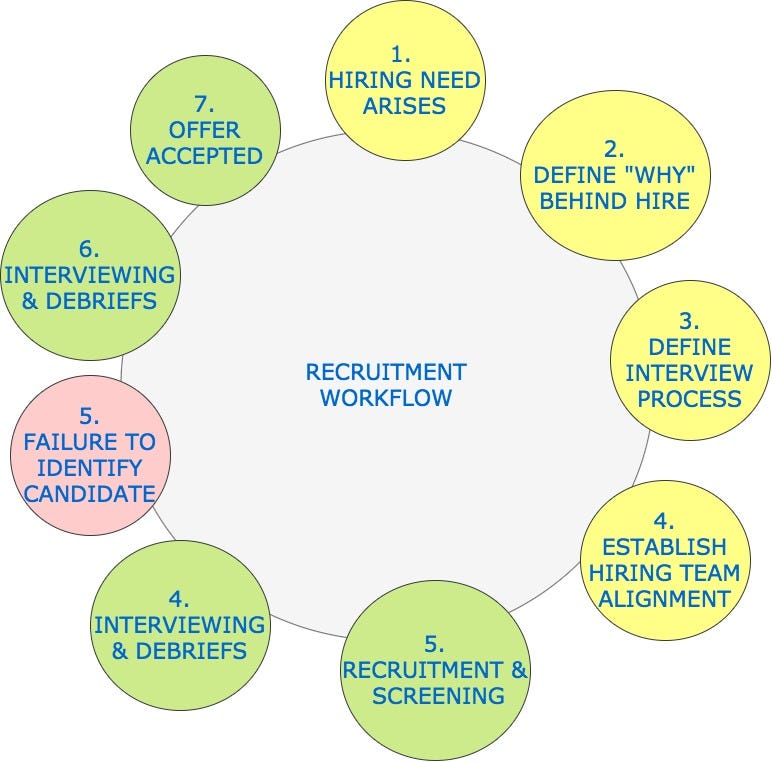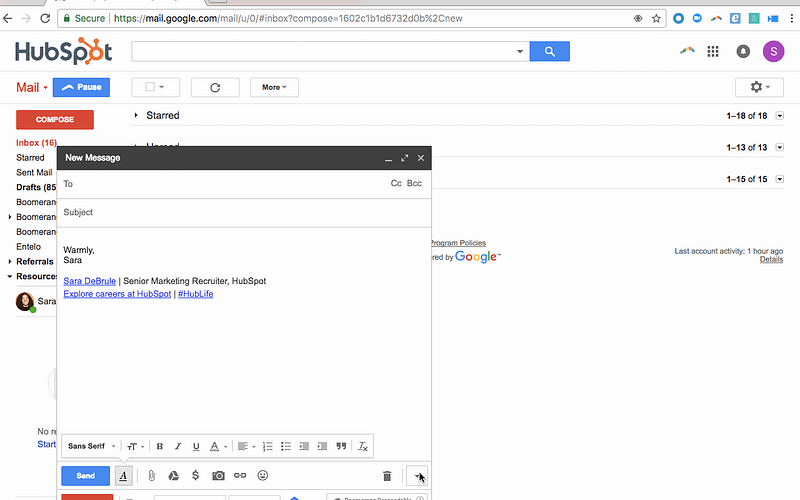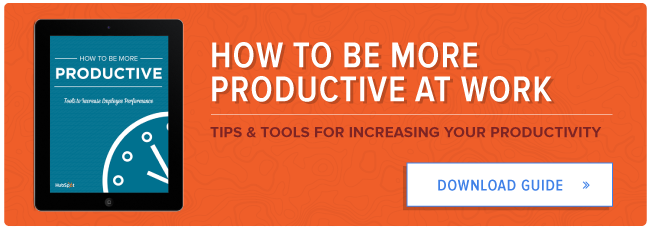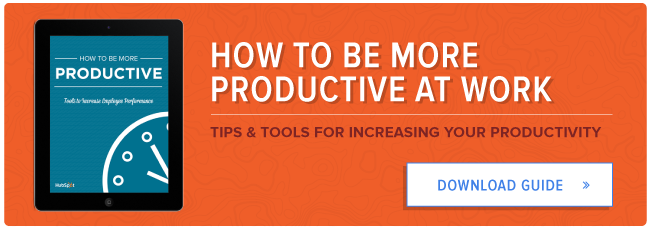Have you ever allowed situational factors to prevent you from doing your best work? I have. And it’s helped me realize I’m tired of not having a personal system that enables me to consistently work at peak performance.
This realization also inspired me to research how people do and think about doing great work. Based on that research, I’ve identified several steps that can be combined to create an effective system that consistently promotes great work. I’m confident that if you follow these steps and create your own system you’ll be able to excel beyond your wildest dreams.
Ready to dive in? Here are the steps that I’ll take you through:
- Establish Personal Values
- Define Your Workflow
- Identify & Automate High-Value Actions
3 Steps to Consistently Do Your Best Work
1. Establish Personal Values
In my opinion, doing great work begins with establishing personal values. We make ~35 professional decisions every single work day. That’s a lot of opportunity to make bad decisions and chances are many of us are making bad decisions — all the time.
Create personal values, and you’ll become a skilled decision maker who knows how to act under any circumstance.
Think of it like this: Personal values are the guiding light for architecting the future you want. If you define and live by your personal values, it’ll become second nature for you to make informed decisions that result in your values (and goals) being realized.
One of the main values that I’ve identified for myself is “act consistently.” At HubSpot, I help our hiring managers find talent that will pave the way for the future of the company and have a lasting impact on our mission.
That can be daunting at times, especially at a company where culture and people are core business values — and we’re growing at hyperspeed. I juggle a number of key pieces that contribute to our fast-growing company’s vision:
- Facilitating decision making
- Increasing the velocity of a search
- Establishing interview processes that surface candidate competencies, skills, and aptitude
- Engaging passive talent
- Building partnerships with hiring managers
- Nurturing a world-class candidate experience
- Closing candidates in a competitive market
The “act consistently” core value reminds me to prioritize my time, remain focused, make decisions faster, follow through, integrate learnings in my work, build partnerships with others, and maintain a high bar for myself.
These are the questions I use to define my personal values:
- What do I want my personal brand to be?
- What do I hate to compromise?
- What do I want the outcome of my decisions/actions to work in support of?
Here’s how you can immediately make better decisions:
- Define ~3 personal values, using the questions above
- Refine how you do your work so that it aligns with your personal values
Gary Vaynerchuk put it this way:
“The more trust you have with yourself in making decisions, the easier it’ll become to act when the time calls for it.”
2. Define Your Workflow
Now that you’ve defined your personal values, it’s time to define the work it’ll take to achieve a successful outcome. Psychologists have found athletes who visualize and mentally rehearse themselves performing their sport outperform athletes who don’t by 13.5%. So take the time to mentally rehearse your work and increase your self efficacy, states of flow, and overall confidence. Not to mention, you won’t be caught flat-footed when you’re faced with obstacles.
Here are the questions I use to define how I’m going to achieve a successful outcome:
- What is a successful outcome?
- What is the best way to work towards the desired outcome?
- What could go wrong?
- What has worked well in the past?
Here’s a rough diagram of my Recruitment Workflow:

Key: Yellow = upfront work, Green = active work, Red = anticipated obstacle
Here’s how you can achieve a higher percentage of successful outcomes:
- Before you take action, establish the steps you need to take to achieve a successful outcome
- Define common obstacles and their solutions, so you’re prepared to address them proactively
- Contemplate previous success factors and recreate them where possible
Simon Sinek, author of “Leaders Eat Last,” similarly acknowledges the power of rehearsing success:
“Champions are not the ones who always win races — champions are the ones who get out there and try. And try harder the next time. And even harder the next time. ‘Champion’ is a state of mind. They are devoted. They compete to best themselves as much if not more than they compete to best others. Champions are not just athletes.”
3. Identify & Automate High-Value Actions
You’re more than halfway to consistently achieving your best work — keep going! Since you’ve established your personal values and mapped out the necessary steps to arrive at a successful outcome, you’ll want to focus on identifying high value actions.
Tired of spinning your wheels and not making progress? Identify high value actions that will help you progress.
According to Atlassian, 60% or less of work time is spent productively.Imagine a world where you rarely need to recreate the wheel, you’re executing on the work that matters the most, and you’re simultaneously empowering your customers to succeed.
If you take the time to identify and automate your high value actions, this could easily be reality. Decrease time spent on non-essential actions and free yourself up to access higher cognitive functions and develop tools that help your customers and your colleagues achieve their goals. If you’re not already, you’ll become a team hero!
Usually, high value actions fall into one of these four major buckets:
- Gives: Key tools and/or information you need to share with your customer/stakeholders
- Gets: Key tools and/or information you need to receive from your customer/stakeholders
- Questions: Key questions you need to ask your customers/stakeholders and vice versa
- Actions: Key actions you and/or your customers/stakeholders need to take
These are the questions I ask myself to identify my high value actions:
- What absolutely needs to be accomplished before I move forward?
- What enables me to partner successfully with my customers/colleagues along the way?
- What specific tools make it easier for me, my customers, and my colleagues to work towards our goals?
Here’s an example of an automated, high value give:

Here’s how you can routinely produce high impact work:
- Define your high value actions that facilitate forward progression: Gives, gets, questions, actions
- Actively return to and improve upon your high value actions
In Arianna Huffington’s book Thrive, she surfaces the dangers of not identifying what work is most important. She quotes the author Iain Thomas, saying:
“And every day, the world will drag you by the hand, yelling, “This is important! And this is important! And this is important! You need to worry about this! And this! And this!” And each day, it’s up to you to yank your hand back, put it on your heart and say, “No. This is what’s important.”
Now go do your best work.
I believe producing great work consistently is within reach for everyone. If you follow these steps, you’ll make great decisions, achieve a higher percentage of successful outcomes, routinely produce high impact work, and increase your productivity.
I won’t lie and tell you these steps are simple.
They’re not.
It takes committing to establishing and improving your personal values, workflow, high value actions, and values alignment. But, the benefits are far too great to ignore!
Commit to focusing on one step over the course of a month and then move on to the next one until you’ve seen all of the steps through to the end. Each of these steps are powerful on their own. When you return to the beginning and start the process of mastering the system you’ve laid out for yourself, you’ll find it’s much easier because you’ll already have a foundation.
I can’t wait to hear about your wild success!
A version of this article first appeared on ThinkGrowth.org.




